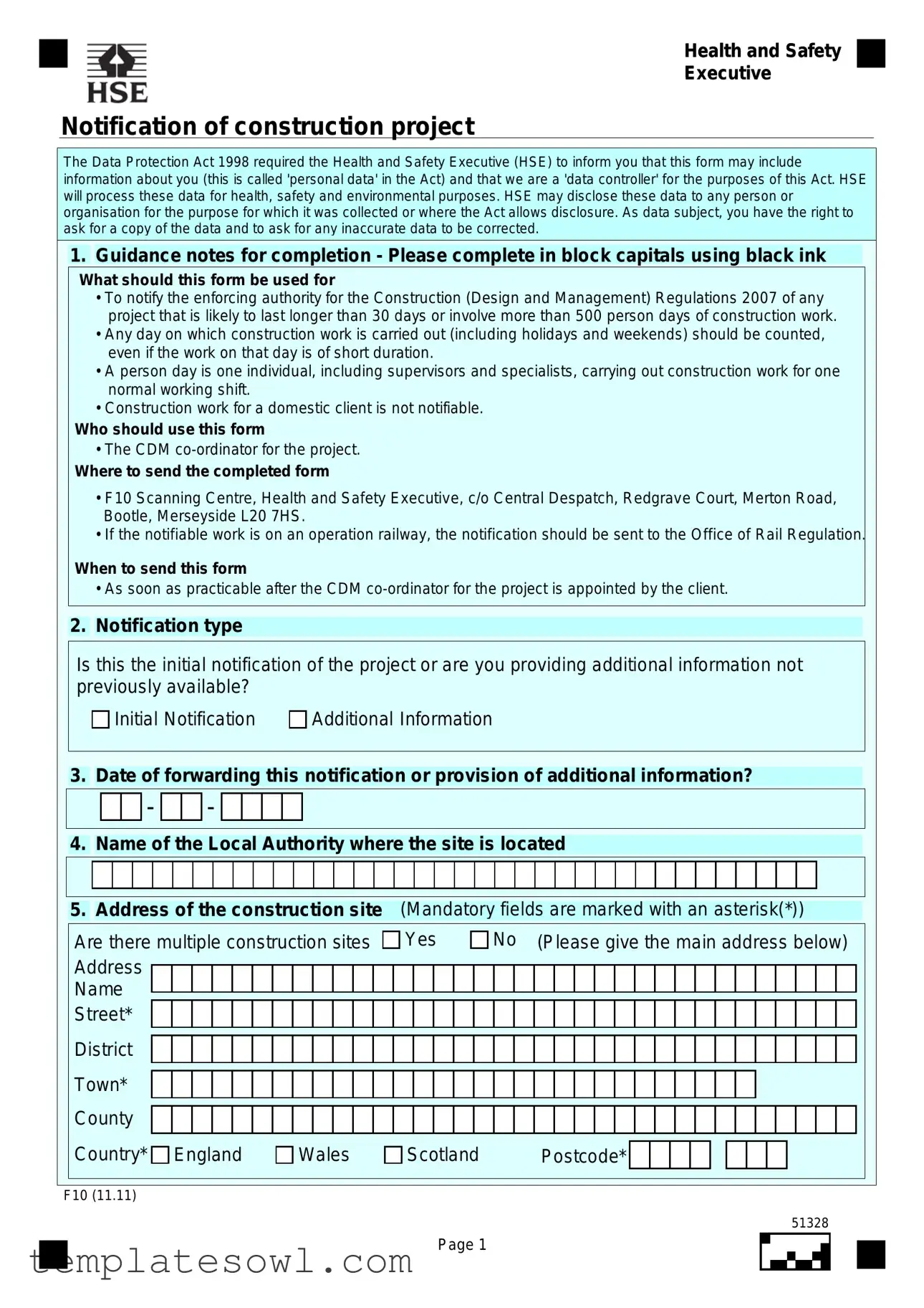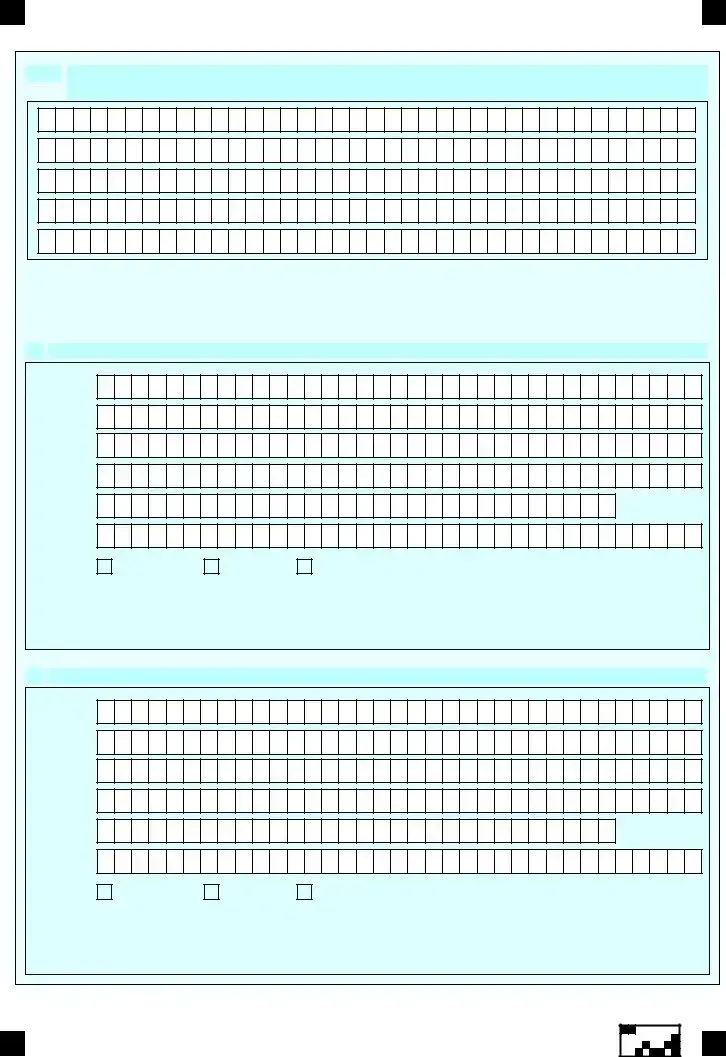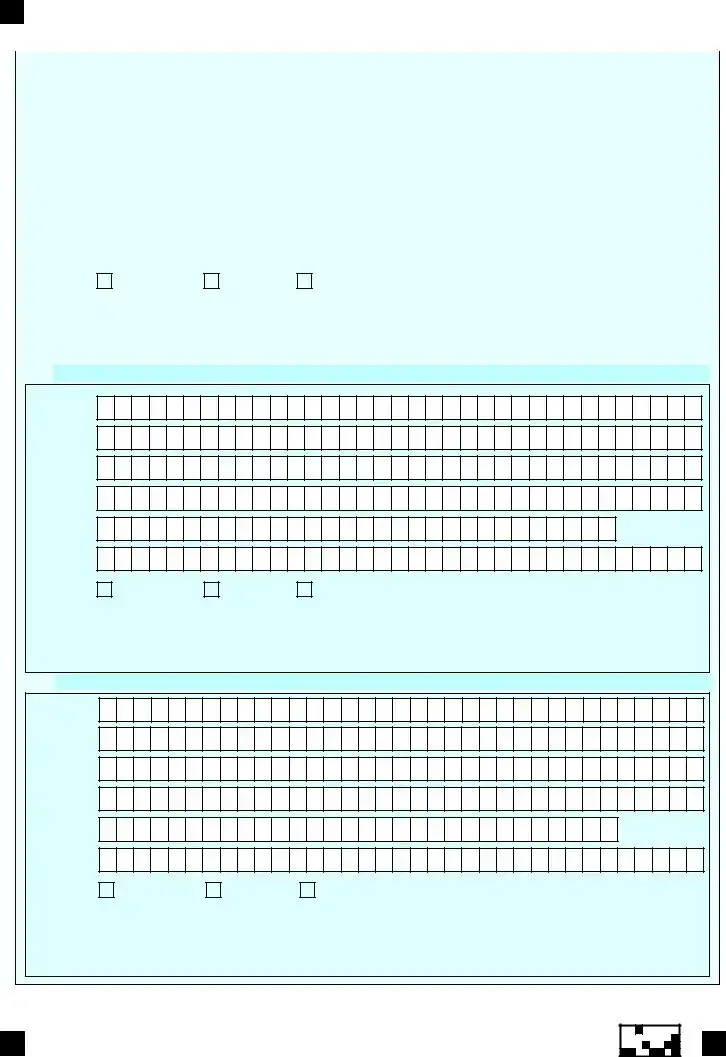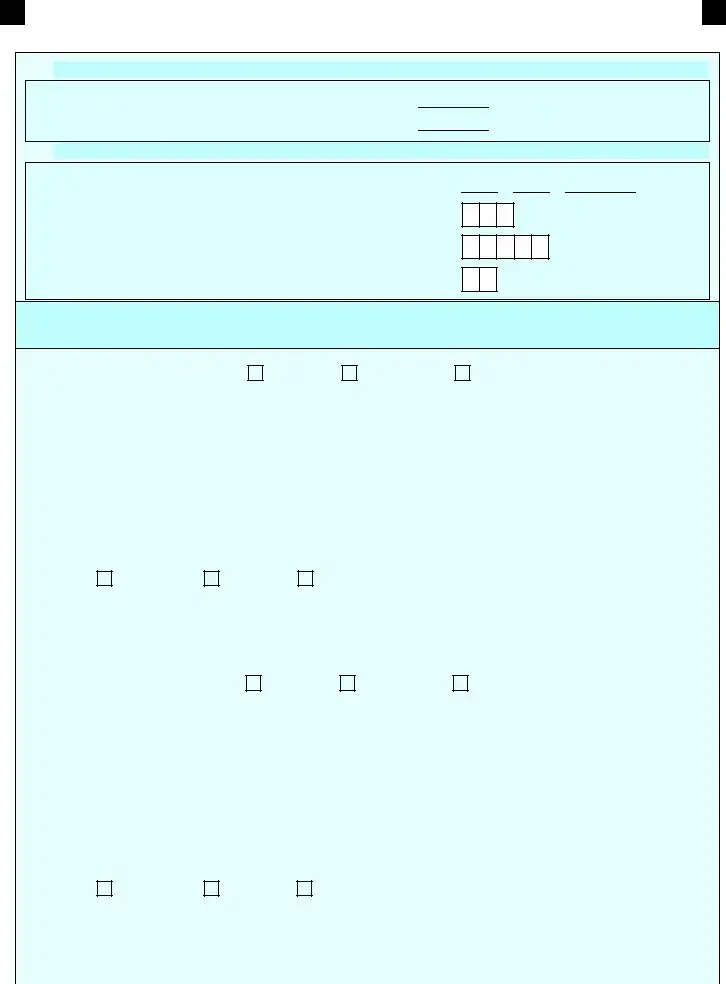What is the purpose of the F10 form?
The F10 form serves to notify the Health and Safety Executive (HSE) about any construction project that meets specific criteria. A project that lasts longer than 30 days or involves more than 500-person days of construction work must be reported. Importantly, each day that construction occurs counts toward this total, regardless of whether it’s on weekends or holidays. However, projects for domestic clients are not required to be notified.
Who is responsible for submitting the F10 form?
The person designated as the CDM coordinator for the project is responsible for completing and submitting the F10 form. This individual works closely with other stakeholders to ensure compliance with health and safety regulations regarding construction projects.
Where should the completed F10 form be sent?
To submit the F10 form, you need to send it to the F10 Scanning Centre at the Health and Safety Executive's office in Bootle, Merseyside. If the project involves operations on a railway, the notification must be directed to the Office of Rail Regulation. Contacting HSE’s Infoline can provide the specific address for the Office of Rail Regulation.
When should the F10 form be submitted?
The form should be submitted as soon as practicable after the CDM coordinator is appointed by the client. Timeliness is key to ensuring that all parties are aware of their responsibilities and that health and safety measures can be effectively implemented.
What types of projects require the use of the F10 form?
The F10 form is required for various construction projects, including residential, commercial, and civil engineering tasks that are expected to take more than 30 days or involve more than 500-person days. Specific project types can be checked in the form, and only one primary type should be selected, although the document allows for additional details to be provided on mixed projects.
Can I request access to my personal data included in the F10 form?
Yes, under the Data Protection Act 1998, you have the right to request a copy of any personal data contained within the F10 form. Additionally, if you find inaccuracies in your data, you can request corrections. The Health and Safety Executive acts as the data controller in this context, responsible for processing your information for health and safety purposes.
What information is required about the site on the F10 form?
When completing the F10 form, you must provide specific details about the construction site. Mandatory fields include the name and address of the site, local authority information, and various contact details for stakeholders involved in the project, such as the client, contractors, and designers. This information is crucial for ensuring that all relevant parties are informed and responsible for compliance.
Is there any guidance on how to fill out the F10 form?
Yes, guidance is provided within the F10 form itself. It is essential to fill out the form in block capitals using black ink. Each section is clearly marked, and mandatory fields are indicated with an asterisk. Following these instructions helps ensure that the form is processed without delays.
What happens if the details of the project change after submitting the F10 form?
If there is a need to update information concerning the project, additional information can be provided using the F10 form. It is important to keep the notifying authority informed of any significant changes, especially those that could impact health and safety during construction work.
Are there any specific fields that must be completed in the F10 form?
Yes, specific fields marked with an asterisk (*) are mandatory and must be filled out for the form to be considered complete. These fields typically include essential contact details and project-specific information, ensuring that all necessary information is readily available for the HSE or relevant authorities.




 -
-  -
-














 /
/ 

 /
/ 







 /
/ 

 /
/ 